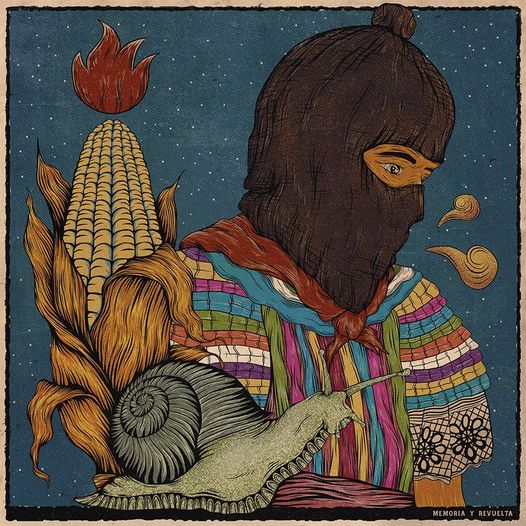Raúl Romero*
August 9, 2022 was the 19th anniversary of the creation of the Caracoles and the Good Government Councils, a watershed in the history of the Zapatista movement and a process that has become a reference for emancipatory projects in different parts of the world. The history is complex, long and, to be precise, it is rather a meeting of multiple histories in which the Mayan Zapatista peoples are the protagonists, architects and of their own present and future. Tracing those stories that today have led to the vindication of autonomy would imply reviewing diverse resistances of the indigenous peoples in Mexico, but also of other liberation movements, some of them reclaimed in the first Declaration of the Lacandon jungle.
The Zapatistas themselves have told the stories of the caracoles and their Good Government Councils. In the text Chiapas: the Thirteenth Stele, published in seven parts in July 2003, they explained the rationale, took stock of what had been achieved, and of the difficulties up to that point. In the case of the Good Government Councils, the history goes back to December 1994, when the Zapatista Autonomous Rebel Municipalities (Marez) and their autonomous councils were created, an exercise of indigenous autonomy, led by the communities themselves, and in which the EZLN has dedicated itself only to accompanying and intervening when there are conflicts or deviations.
In rebel territory, the position of authority is not remunerated, it is conceived of as a task for the benefit of the collective, and it is rotating. The community helps with their upkeep, and also sanctions or removes authorities who do not fulfill their duties. Only civilians can hold positions of authority, either in the community or in the autonomous municipalities. These autonomous councils are the ones in charge of creating the material conditions for resistance, those that are charged with governing a territory in rebellion, without any institutional support. The achievements since then were impressive in many areas: health, education, justice, communication, gender, work, housing, land, commerce, food, culture….

However, the Zapatistas identified problems such as the imbalance in the development of autonomous municipalities and communities, problems between autonomous municipalities and between these and governmental municipalities, complaints of human rights violations, and others. Thus, in order to face the problems of autonomy and to build a more direct bridge between the communities and the world, Good Governance Councils were created, which also ensures leading by obeying. The councils are composed of two or more delegates from each of the autonomous councils of the municipalities in each zone and have their headquarters in the caracoles.
The caracoles also have a history of their own. In August 1994, in order to hold the National Democratic Convention in Guadalupe Tepeyac, in Zapatista Chiapas, the rebel peoples built an Aguascalientes, a space for dialogue and encounter between the Zapatistas and national and international civil society. On February 9, 1995, this Aguascalientes was destroyed by the federal army under the command of Ernesto Zedillo. But, determined to build and share the projects for life between their territories and world, the Maya rebels set about the task of erecting five other Aguascalientes, this time in Oventic, La Realidad, La Garrucha, Roberto Barrios and Morelia.
In August 2003 the Zapatistas also decided that the Aguascalientes should perish, and put an end to the paternalism of some NGOs that sought to impose projects and reduce solidarity to projects of pity and charity. But the five Aguascalientes died to give life to something new: five caracoles, doors by which “to enter the communities and for the communities to go out; like windows to see us inside and for us to see outside; like speakers to take our word far away, and to listen to the word of those who are far away. But above all, to remind us that we must watch over and be attentive to the fullness of the worlds that populate the world.
To document the advances and achievements of the caracoles and the Good Government Councils, one can review the Cuadernos de la Escuelita Zapatista or Volume one of Critical Thought in the Face of the Capitalist Hydra, because the Zapatistas also have this characteristic of accompanying their practice with their own theory. You can also review great works such as Paulina Fernandez, Zapatista Autonomous Justice. Tzeltal Jungle Zone.
In 2019 the Zapatistas announced that, as part of the Samir Flores Vive campaign, they had reorganized and expanded their territories. They now have 12 caracoles and their respective Good Governance Councils. We are witnessing an exercise of political imagination, of creative resistance, of autonomy, of ruling by obeying. A process that is not exempt from its contradictions, but one that does not stop betting on the construction of an alternative beyond capitalism. Long live the caracoles.
*Sociólogist
This article was published in La Jornada on August 15th, 2022. https://www.jornada.com.mx/2022/08/15/opinion/020a1pol
English interpretation by Schools for Chiapas.
